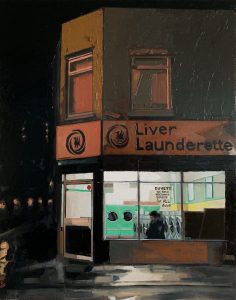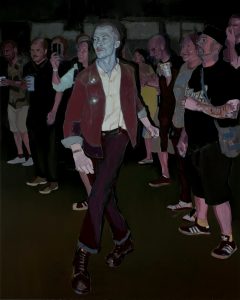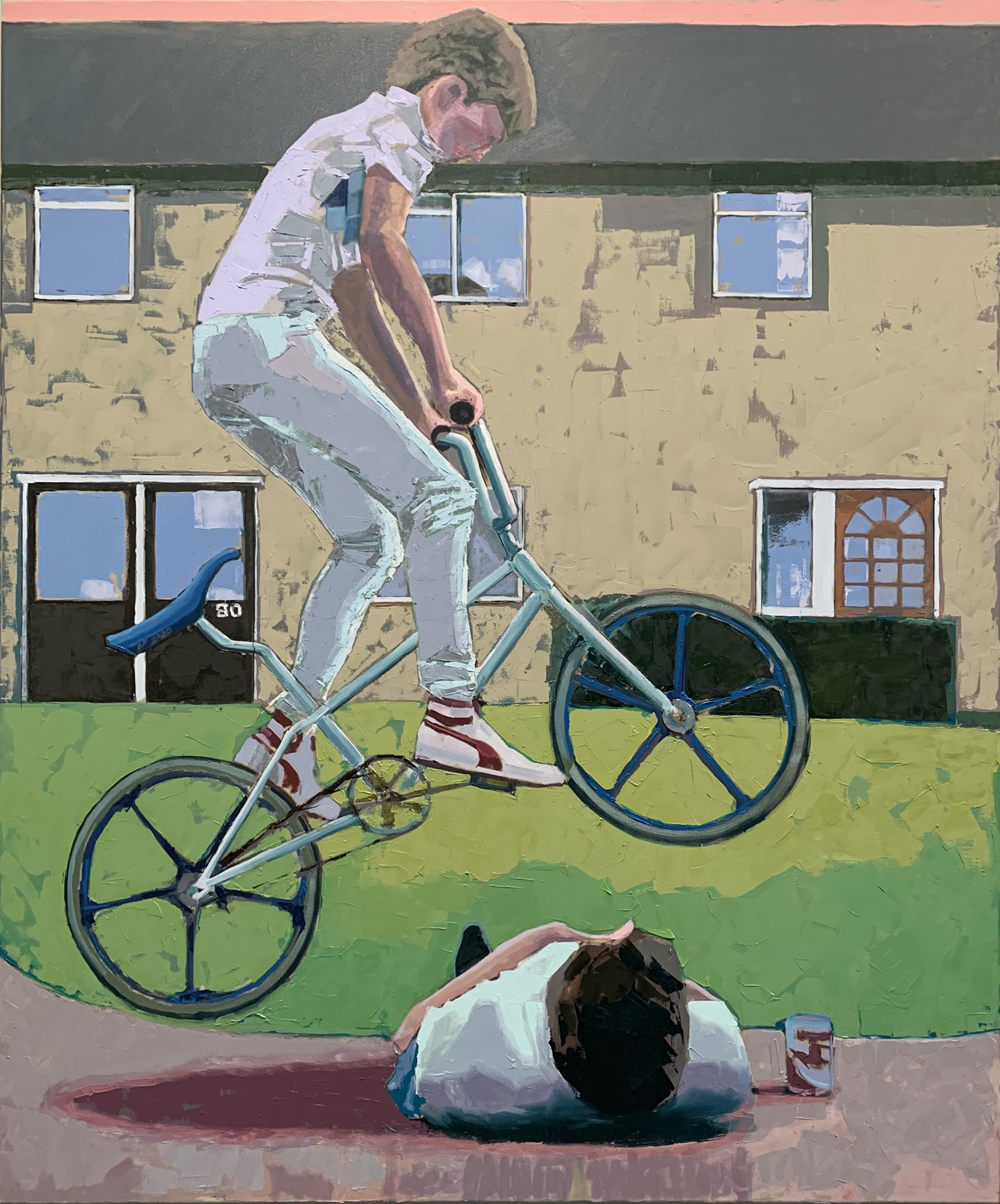01. What is your typical studio routine?
I get in at about 9.30 after school drop offs, and I tend to work through until 19.00, often with just a convenience break. I will get so immersed that I often skip eating unless I am well enough prepared to bring food with me. It’s an intense process. I often have at least two or three paintings on the go at the same time.
02. Was there a definitive point in your life that you decided to become a professional artist?
Yes! After 14 years of secondary school teaching (late 2015), I came to the point where if I didn’t start doing something creative, I never would.
03. Many of us at QSS have previously studied at Ulster University at different stages of our education (BA, MFA, PhD). How did this experience influence your later attitude as a professional working artist?
I took the MFA at UU from 2016-18, and it set me up very well for the prospect of working alone and maximising the time to prepare and create work. It really served to show me how hungry I was to make art and develop my practice.
04. Socially, historically and perhaps geographically, Belfast has many ‘unique’ attributes that define it as a city. Can you describe one positive and one negative aspect of working in this ‘unique’ place.
I truly appreciate the atmosphere and dynamism of Belfast. It has so many characters who tend to be who they say they are. Coming from London, there is often so much pretence and performance in terms of career and aspiration that gets in the way. I only miss the breadth of cultural options which I feel Belfast lacks in some ways (but this is changing monthly!).
05. There are many arts journals, which would you consult regularly?
I do like to consult Irish Arts, VAI and Juxtapoz. Most of it is done online now, so I tend to follow those who have the best web/app presence.
06. What role does social media play in the documentation/promotion of your own work?
It is paramount. I have been very lucky in being able to ride a social media wave that has significantly grown my presence and reach internationally over the last 18 months. Social media has brought me in close contact with hundred of buyers and contemporaries who I otherwise would have such reduced access to.
07. Is there a difference, say, in being called an ‘artist’ or a ‘painter’/’sculptor’, ‘printmakers’? Do these distinctions matter?
Mentally I feel more comfortable calling myself a painter, as opposed to an artist. But I can wear that badge without fear now. I think it comes down to how you can navigate the occasional disconnect between my own and other’s preconceptions.
08. How do you find an audience beyond the studio?
Social media is quite incredible for this. But it requires patience, commitment and the ability to treat it with the same respect as your craft.
09. Have you completed any artist residencies or are there any you aspire to?
I am intrigued by many of the residencies that people go on. I would love to try something in the USA.
10. Can you name some of the contemporary artists you are interested in?
Ruprecht Von Kaufman, Milo Hartnoll, Lynette Yiadom-Boakye, Elizabeth Magill, Zoey Frank.
About the artist
Dan Ferguson joined QSS in 2018 on completing an MFA at the Belfast School of Art. His most recent work reflects the disjointed memory of growing up in the 1980s/1990s. He extensively explores events, stories, family and strangers in the paintings. Heritage, traditions, heirlooms, perception and mystery all feature prominently.

Launderette (2019), oil on cradled wood, 62 x 78 cm

Make Room, oil on canvas, 100 x 80 cm

